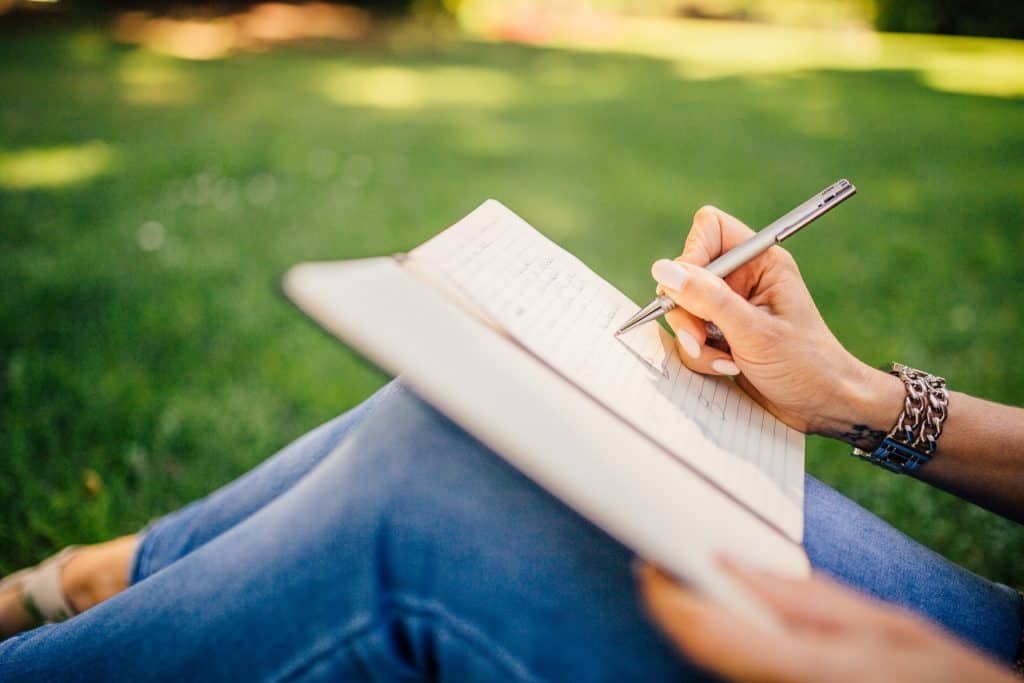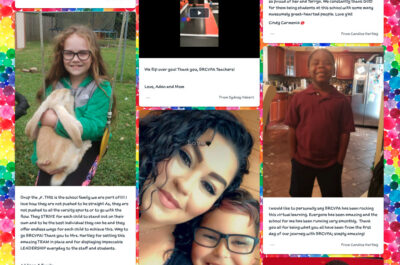Harvard recently wrote an article about the research behind gratitude. Overwhelmingly, the research showed that practicing gratitude helped people feel happier overall. As Thanksgiving approaches, let’s go over some ways that you can start practicing gratitude, and through doing so obtain more happiness in your life.


What Is Gratitude?
Gratitude is giving regular thanks for things in your life. It isn’t just saying thank you, it is about giving heartfelt appreciation. This sounds simple, right? While the idea is simple, it may not be as easy. To start a daily gratitude practice, you have to change your mindset.
It can be easy to go about our lives focusing on what we need, or what we don’t have. To change our minds to be more grateful, we have to stop focusing on what we want and focus on what we have. Don’t just give thanks for the big things in your life, give thanks for the small, everyday things.
Why Gratitude is Important
Have you ever had a terrible day, a day where everything feels like it is going wrong? Think back to that day and try and remember if you felt grateful for anything. It is hard to feel gratitude when everything seems to be going wrong, but if you start finding small things to feel grateful for, you’ll notice that things aren’t as bad as they seem.
There have been many times in my life where I felt so annoyed with life, but I would start to notice little things (like being grateful I was able to get a Dr. Pepper that day). Noticing these small things and being grateful for them, helped me realize that I had a pretty great life, and while it is okay to feel sad once in a while, gratitude can help you feel generally happier. Negativity can be very draining, it is difficult to be negative when you are practicing gratitude.
Changing our mindset to be more grateful helps us change our perspective about the world around us. According to Robert Emmons, a scientific expert on gratitude, here are some ways practicing gratitude can improve your life.
Physical Benefits
- Stronger immune systems
- Lower blood pressure
- Improved sleep
Physiological Benefits
- More positive emotions
- More alert and awake
- Increased joy and pleasure
Social Benefits
- More inclined to help others and find ways to serve
- More outgoing
- Fewer feelings of loneliness and isolation

Benefits of Gratitude in the Workplace
“Simple, thoughtful, sincere, and consistent employee recognition leads to higher productivity and performance levels.”
Johnathan H. Westover, Ph.D
Forbes wrote an excellent article about the benefits of showing gratitude in the workplace. The gist of this article is simple, thoughtful, sincere, and consistent employee recognition leads to higher productivity and performance levels. Easy, right? While this thought is obvious and seems easy, it is not always automatic. Also, It can also be difficult to do in workplaces, especially with corporate atmospheres, as gratitude needs to happen on an individual level to be recognized and appreciated.
Ways to cultivate gratitude in the workplace can include showing appreciation for employees through shout-outs, treats, and a simple “thank you” can be a great way to start. A workplace appreciation group card is an easy way to involve everyone in a workplace gratitude practice. Employee and boss appreciation doesn’t have to cost a thing. Sincere words of appreciation often mean more than anything materialistic offered.
My Gratitude Practice
I decided that I would practice gratitude every day, for a whole week to see how my life would be impacted. After having a baby recently, and getting very little sleep, I was having a hard time feeling grateful. I was so tired and all I could think about was how tired I was, and how I miss having more time to myself. I knew something needed to change so I could feel happier.
Every day, I would text my friend and tell her one thing I was grateful for. At first, I had to force myself to think of something I was grateful for. It started with general things, “I’m grateful I have good friends.” Then with each day, I started noticing more and becoming more specific. It became easier to just go about my day and think “I’m grateful my baby took a nap, even if it was only for 35 minutes. I was still able to get a lot done.”
Now, being grateful doesn’t seem as much of a chore, and has become more automatic because I changed my mindset. Of course, I am still not getting more sleep, but I’m not as grumpy about it as I was before.
What is a Gratitude Practice?
Now that we know what gratitude is, let’s talk about what a gratitude practice looks like. A gratitude practice is doing anything that helps you notice the good in your life. If you tend to be more pessimistic, it might be difficult to change your perspective. Positive people can also have a tough time practicing gratitude. Before you read on, remember, practicing gratitude doesn’t have to be complicated. Let’s go over some steps to help you get started.

Creating a daily gratitude habit
To start a regular gratitude practice, you can start by setting aside time each day. Maybe instead of scrolling through Instagram in the mornings, you can take 5 minutes and think about what you are grateful for. Start small so you don’t feel overwhelmed, 5 minutes is not a very long amount of time. Once you make a habit of practicing gratitude in the morning, try adding a time in the evening before you go to bed.
Another aspect of making sure your gratitude habit is effective is to have a place to write down your thoughts. Gratitude journaling is a simple and hands-on way to think about what you are grateful for. Start by keeping a gratitude journal next to your bed so when you wake up in the morning you can easily jot down a few things you are grateful for. Try to be specific if possible. Remember my example from earlier? Once I started getting specific, the trials in my life didn’t seem as difficult anymore. I was able to see past the clouds and find more joy daily. My circumstances didn’t change, but my mindset did.
Gratitude journaling doesn’t have to take a long time or require a lot of effort. Writing down a few things, or even just one thing a day can make a huge difference in your day. By writing in your gratitude journal in the morning, you are automatically getting a positive start to your day.
If physically writing something isn’t your jam, you could also try a virtual gratitude journal like Soul. The platform sends daily prompts via text that encourage you to write about thankfulness and appreciation in your life. Soul records your responses, either text, photos, videos, or voice memos, in an online diary, and it rewards you for streaks of contributions. It’s a simple way build a good habits and makes practicing gratitude a daily exercise.
10 More Ways to Practice Gratitude
There are plenty of ways to practice gratitude that doesn’t involve journaling.
- Practice gratitude affirmations. Gratitude affirmations can help reset your mindset to be more positive. Here is a list of 60 different affirmations you can say to yourself while practicing gratitude. This article also gives great tips for combating bad days and remembering that a bad day is just that, a bad day. We have the power to change our perspective and in turn, become more positive and grateful.
- Meditate. You can bring gratitude into your daily meditation practice. Check out this article about gratitude and meditation. It includes some video examples that you can follow for guided gratitude meditation. They also list the benefits of meditating with gratitude. Some of them include feelings of contentment, less materialism, better mental health, and relationships with others. The main idea with gratitude meditation is to start by clearing negative thoughts and focusing on the thoughts that help you think of what you are grateful for.
- Participate in a social media challenge. If you are an active social media user, starting a challenge on social media can help you (and remind others that follow or are friends with you) to be more grateful. The wonderful thing about these challenges is you can set the terms. Do you want to do a 30-day challenge? A 20 day? Only 5 days? Set a goal and stick with it. You can even use your own hashtag like #jennisgratitudechallenge (use your own name here) or #30daysofgratitude.
- Create with Kudoboard. With Thanksgiving coming up, what better way to showcase what you are grateful for than creating a thanksgiving collage with kudoboard. There are many ways you can use this collage. For example, siblings can use it to send to their parents on thanksgiving morning. Also, you can make a collage to send to a spouse or friend.
- Share your gratitude with others. Remember my example? By asking my friend to participate in a challenge with me, I was more motivated to practice gratitude daily. I was reminded to think of something I was grateful for each time she texted me about what she was grateful for. Making yourself accountable to someone by inviting a friend or loved one to participate in a gratitude practice with you can help motivate you to give thanks more often.
- Pay attention to your words. People who are grateful have a specific way of speaking. They are inherently more positive and it shows through their words. You will often hear people who practice gratitude often use the words, fortunate, blessed, abundant, and more. Similarly, people who are grateful don’t focus on how great they are, but how many wonderful things are happening to them.
- Remember the bad. Don’t just be grateful for the good in your life, try and think of how you can be grateful for trials or hardships. Think of the smaller, annoying parts of your day and find ways to be grateful. Perhaps the traffic driving to work was terrible, but it was because of an accident. Be grateful that you weren’t involved in the accident and send good thoughts to the people that were. There is almost always a way to spin a bad day and make it more positive.
- Pick up your phone. No, not to check social media, but to call or text someone you are grateful for. Pick one friend or family member a day and let them know in specific terms why you are grateful for them. I promise it will make their day.
- Be more positive. If you are finding it difficult to change your mindset, or you simply want to be more mindful of your thoughts and words, challenge yourself to one full day a week where you don’t complain about anything. On this day, you are focused on the positive. This might look like taking a negative experience and putting a positive spin on it.
10. Make a visual reminder. Put a reminder on your bathroom mirror to think of something you are grateful for. A simple sticky note with the question “what are you grateful for?” is really easy and will help you remember your daily gratitude practice.
A Gratitude Mindset
Remember, when practicing gratitude, you are changing your mindset. Gratitude means focusing less on what you want, and materialistic needs. Grateful people focus on what they already have, they are positive and helpful. If you feel that you are having a hard time being grateful or positive, try getting out of your own head and helping someone else. We often see more blessings and happiness when we stop serving ourselves and focus on helping others.
Being genuinely thankful doesn’t mean seeing the world through rose-colored glasses. Having a spirit of gratitude means seeing the world for what it is, but focusing on the good parts. Not only does focusing on the good parts influence your own well-being, but it also encourages those good parts to eventually dominate the bad ones. Additionally, focusing on what you already have doesn’t mean eliminating all ambition from your life. It’s about finding a balance, and one that’s best for you. There is a time for making goals and a time for thankful reflection. “To everything, there is a season”, and this is the season of giving thanks.




